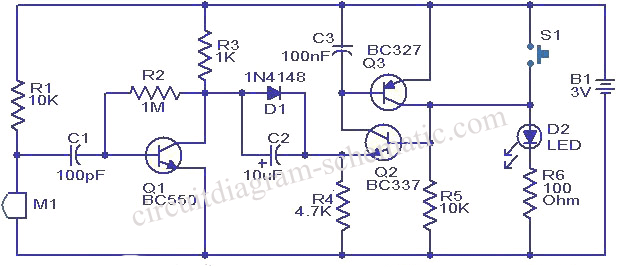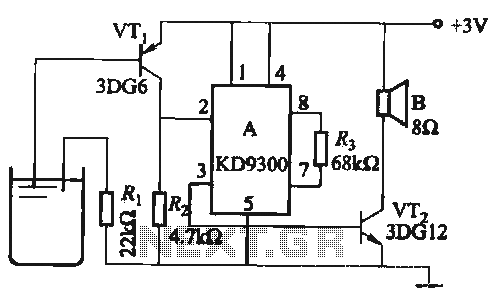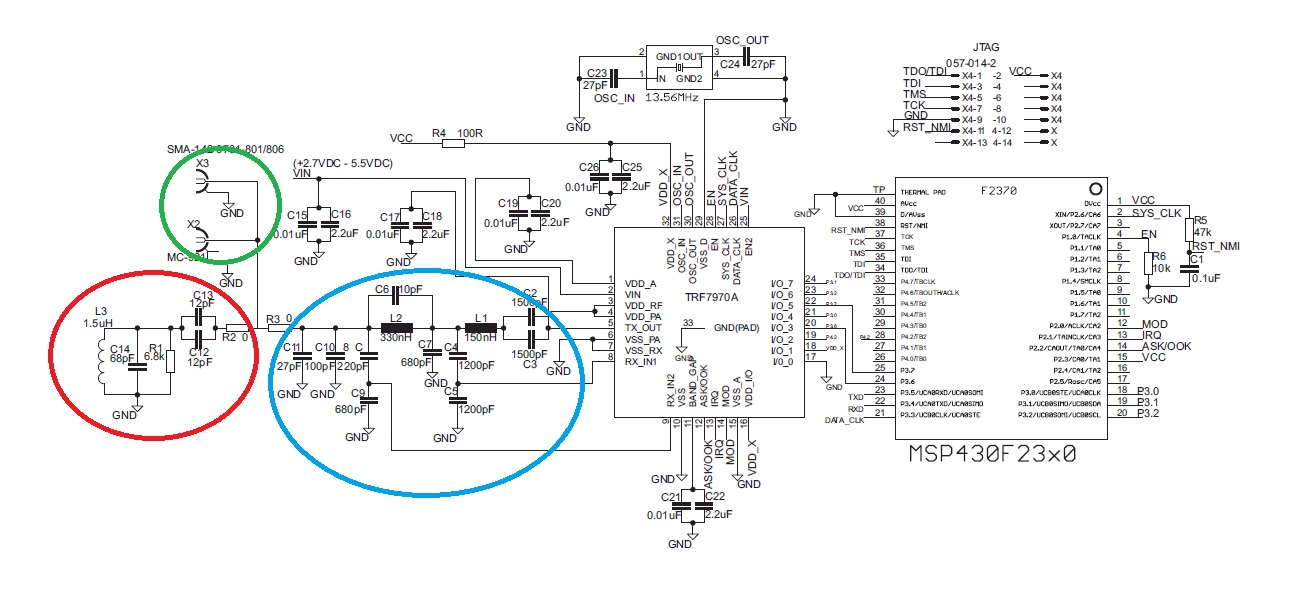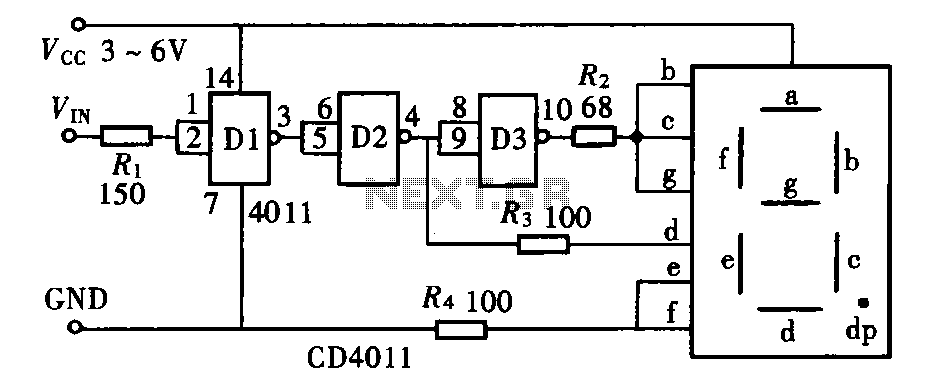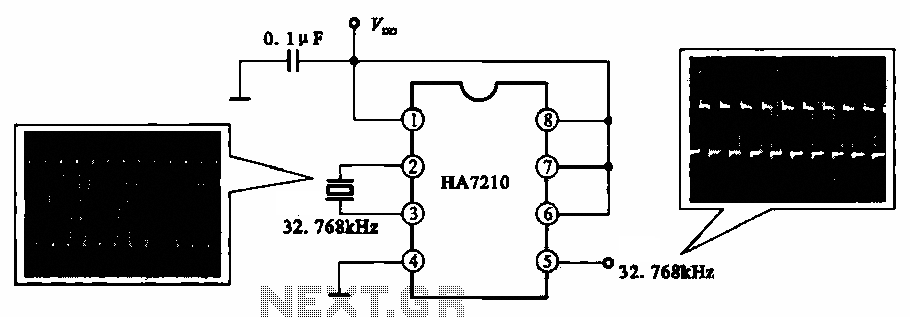
+5V 1.6A precision switching power supply circuit
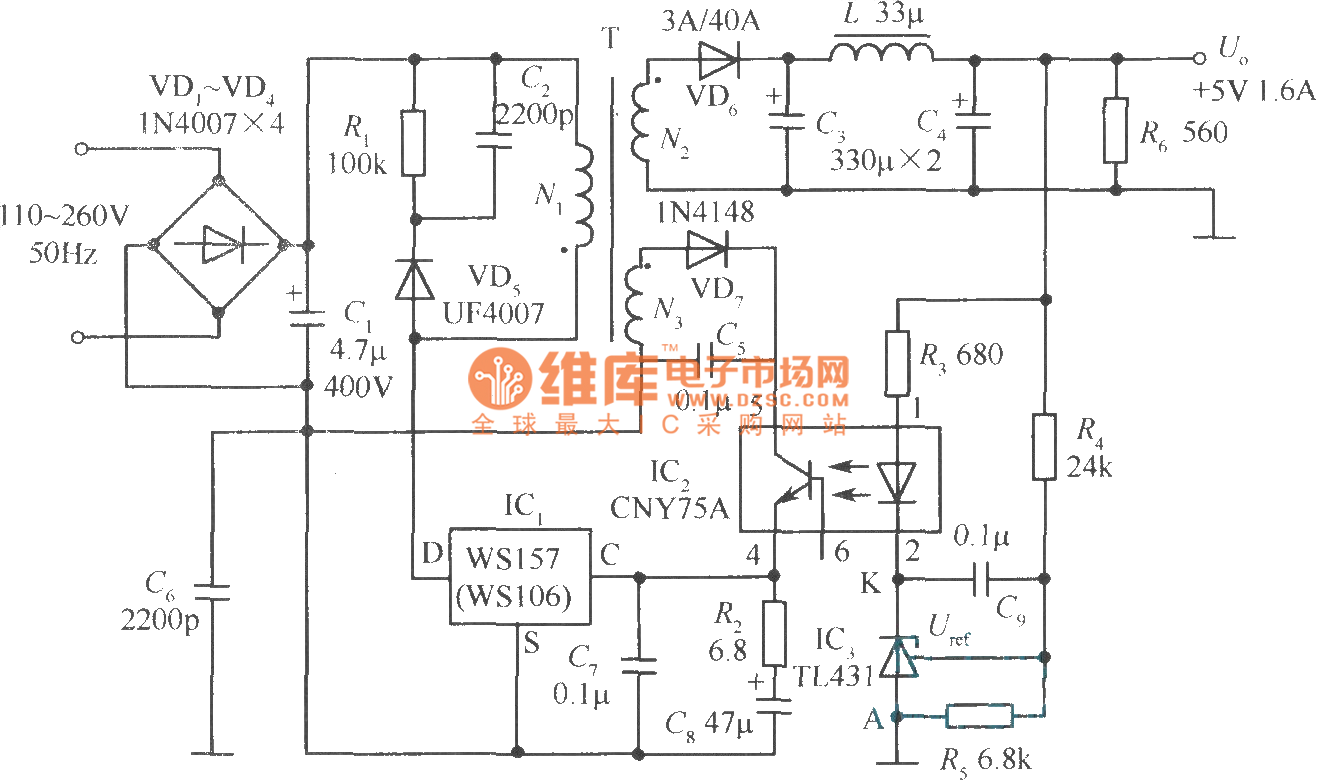
The +5V, 1.6A precision switching power supply circuit is depicted in the figure. This circuit utilizes a photoelectric coupler (CNY75A) and an adjustable precision parallel regulator (TIA31). R3 serves as the current limiting resistor, while R4 and R5 function as the sampling resistors. When the output voltage (Vo) changes, the sampling resistors will be compared to a 2.5V reference voltage.
The +5V, 1.6A precision switching power supply circuit is designed to provide a stable voltage output with minimal ripple, making it suitable for sensitive electronic applications. The circuit employs a photoelectric coupler (CNY75A) to isolate the control circuitry from the high-voltage side, enhancing safety and performance. The adjustable precision parallel regulator (TIA31) is used to maintain a constant output voltage, which is critical for ensuring the reliability of the powered devices.
In this circuit, R3 is the current limiting resistor, which protects the components by preventing excessive current flow. R4 and R5 are configured as sampling resistors, enabling the circuit to monitor the output voltage. When the output voltage (Vo) deviates from the desired level, the feedback mechanism compares the voltage across the sampling resistors to a stable reference voltage of 2.5V. This comparison allows for precise adjustments to the output voltage, ensuring it remains at the required +5V level.
The overall design of the circuit emphasizes efficiency and stability, making it suitable for applications that require a reliable power supply. The choice of components, such as the CNY75A for isolation and the TIA31 for regulation, reflects a careful consideration of performance and safety in the design of switching power supplies.The +5V, 1.6A precision switching power supply circuit is as shown in the figure. This circuit increases the photoelectric coupler (CNY75A) and the adjustable precision parallel regulator (TIA31). R3 is the current limiting resistor, R4 and R5 are the sampling resistor. When the Vo changes, the sampling resistor will compare with the 2.5V reference voltage o.. 🔗 External reference
The +5V, 1.6A precision switching power supply circuit is designed to provide a stable voltage output with minimal ripple, making it suitable for sensitive electronic applications. The circuit employs a photoelectric coupler (CNY75A) to isolate the control circuitry from the high-voltage side, enhancing safety and performance. The adjustable precision parallel regulator (TIA31) is used to maintain a constant output voltage, which is critical for ensuring the reliability of the powered devices.
In this circuit, R3 is the current limiting resistor, which protects the components by preventing excessive current flow. R4 and R5 are configured as sampling resistors, enabling the circuit to monitor the output voltage. When the output voltage (Vo) deviates from the desired level, the feedback mechanism compares the voltage across the sampling resistors to a stable reference voltage of 2.5V. This comparison allows for precise adjustments to the output voltage, ensuring it remains at the required +5V level.
The overall design of the circuit emphasizes efficiency and stability, making it suitable for applications that require a reliable power supply. The choice of components, such as the CNY75A for isolation and the TIA31 for regulation, reflects a careful consideration of performance and safety in the design of switching power supplies.The +5V, 1.6A precision switching power supply circuit is as shown in the figure. This circuit increases the photoelectric coupler (CNY75A) and the adjustable precision parallel regulator (TIA31). R3 is the current limiting resistor, R4 and R5 are the sampling resistor. When the Vo changes, the sampling resistor will compare with the 2.5V reference voltage o.. 🔗 External reference
